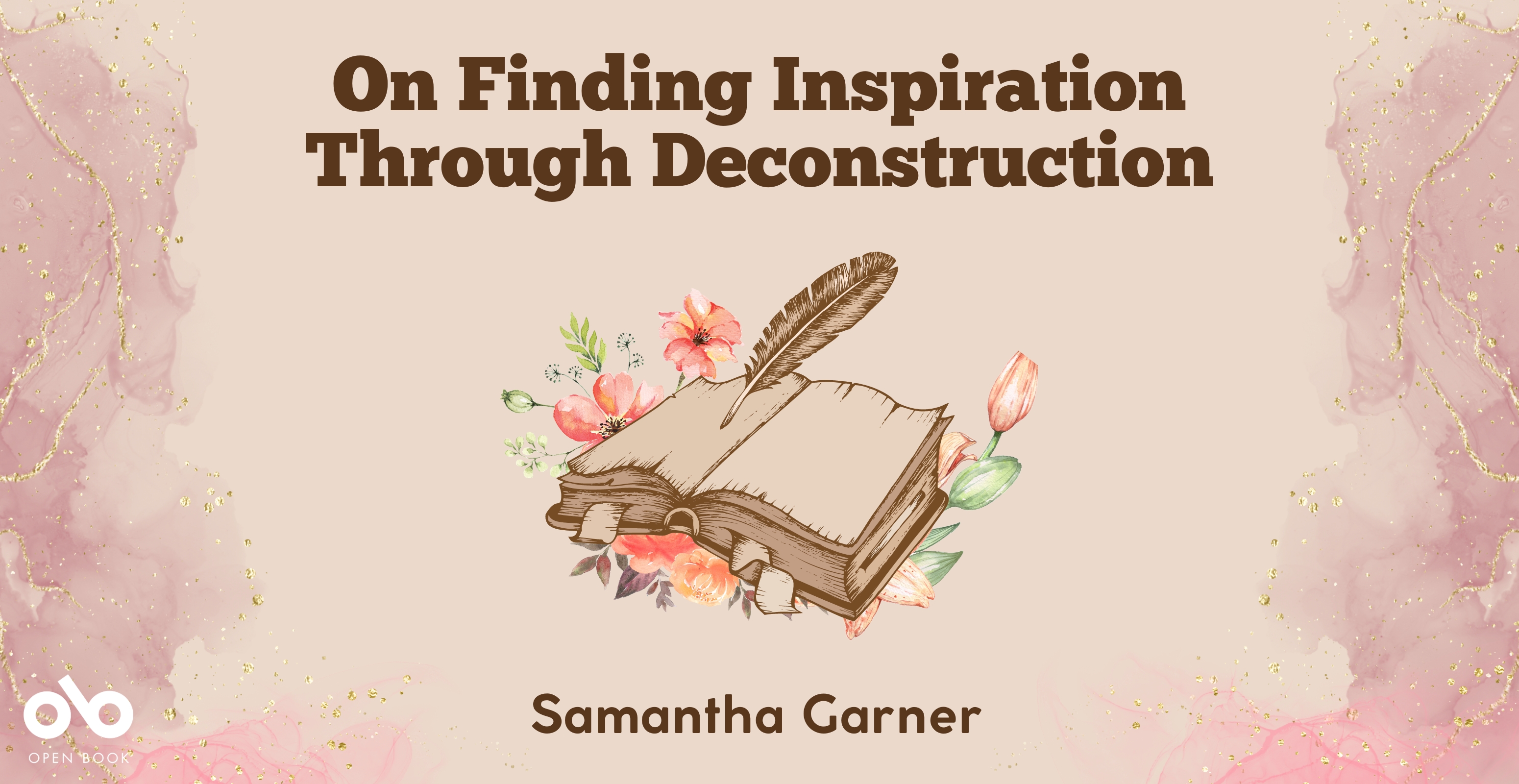On Finding Inspiration Through Deconstruction
By Samantha Garner
In my last column, I talked about the unexpected rewards of returning to the same themes and subject matter in your work. But there’s a related facet to this that I feel deserves its own examination—the practice of consciously returning to your own work, pulling it apart, and reusing elements.
This is something I do often with poetry, for example. I’ve written lots and lots of poems since I was a teenager, and many of them aren’t what I’d call … good. At least, not to my current taste. But back then, I was proud of them. And while I full-body cringe at the overall poems now, there are bits and pieces that still shine back at me. Yes, even things I wrote when I was eighteen. Nobody’s more shocked than I am. So I think: Why not take those things and give them new life?
I used to think of this as “plagiarizing myself,” but I no longer think that’s entirely fair (aside from it being technically impossible, but you get my point). Plagiarism implies some sinister intent. Purposely deconstructing my own work is simply a way to get inspiration, to learn more about myself. What am I still drawn to years later? Why am I still drawn to these elements? Sometimes it means I haven’t fully resolved whatever made me write it down in the first place, but in other cases there’s just a cool turn of phrase I don’t want to lose to the ether.
Many of these poems are unpublished, and many for good reason. But it isn’t fair to my earlier self to give up on them fully. There have been times when I was able to reconstruct a poem around a salvageable portion, and there have been times I integrated an older passage into brand-new work. There have also been times I could answer a question I’d been inadvertently asking all those years ago. Recently, for example, I wrote a poem in the style of an older one. The subject matter, structure, and even some word choices were the same, but my perspective was entirely different because I was different. I wanted to have this conversation with myself twenty years later. The two poems stand together now. Until, maybe, they become a triumvirate in another twenty years.
If you’re thinking this all sounds a bit self-referential or like metafiction, you’re not wrong. Directly referencing past work or even self-as-author in your writing can be an interesting way to comment on the work itself or inject a bit of levity. It can add detachment from the work but also a sort of closeness to the reader. Yet, self-reference is only a part of the deconstruction I’m talking about. The larger part of it is taking a piece of writing that doesn’t work overall, and intentionally mining it for things that do.
Your CanLit News
Subscribe to Open Book’s newsletter to get local book events, literary content, writing tips, and more in your inbox
For me, this practice is another form of collaborating with the idea itself. Much like returning to the same themes and ideas, it illuminates my preoccupations. What I do with that information can often lead to something exciting. And even if it doesn’t, it’s a fun exercise.
Of course, this isn’t a groundbreaking concept. Many writers are advised to kill their darlings, but I would argue that the great majority of them instead rehome those darlings in a separate file for later. I know many who were glad they did—myself included! An early iteration of one fantasy novel was actually more science-fantasy, set on a tidally-locked planet. I ultimately scrapped that setting in favour of one that felt more manageable at the time (gratitude to my writers’ group for their bottomless patience with me). Yet, that tidally-locked planet never stopped calling to me. Loudly. Eventually I used it as a setting for another project where it worked better, and because I had that little file of rehomed darlings, I could just copy and paste entire sections of worldbuilding. My months’ worth of notes didn’t go to waste—a miracle.
I’m a writer who believes in practical actions like trying to work on my writing every day. Yet, I’m also a writer who believes that writing feels a bit like sorcery. When I come across something I wrote years ago that works perfectly in an entirely different project I’m working on now—you can’t tell me that isn’t magic.
Next time you feel stuck creatively or want a new way of looking at old ideas, I suggest you try braving your old work and see what shines back at you!
The views expressed by Open Book columnists are those held by the authors and do not necessarily reflect the views of Open Book.
Samantha Garner is the author of The Quiet is Loud, shortlisted for the 2022 Kobo Emerging Writer Prize. A Canadian of mixed Filipino-Finnish background, her character-driven fantasy novels explore themes of identity and belonging. When not writing, Samantha can be found daydreaming in a video game or boring a loved one with the latest historical fact she’s learned.
She can be found online at samanthagarner.ca and on Instagram and Twitter at @samanthakgarner.




